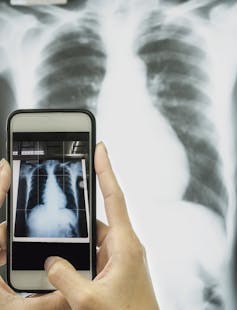Suturing is one of the oldest of medical arts. Its practice goes back at least 5,000 years, with evidence from mummies showing that Ancient Egyptians used plant fibres, hairs and tendons to sew up wounds. Today, basic suturing is something that all doctors are expected to master, and practically all GPs will have to perform at some stage.
The scariest part of learning how to suture, says Perth-based GP Dr Alison Soerensen, is when you’re presented with your very first patient.
“Up until then, you’ve practised on pig skin or pig trotters, but that’s not a perfect substitute for the real thing. ‘You’re my first one’ doesn’t necessarily go down well with the patient!” she laughs.
But Dr Soerensen says she was relatively lucky with her first experience, which involved a very elderly patient without too many concerns about cosmetic outcomes, and who had a very good relationship with the GP who was supervising the intervention.
“The GP said something like: ‘It’s her first time, but don’t worry, I won’t let her sew your foot to your elbow or anything’, and the patient was OK with it.”
Dr Soerensen says an easier first-time experience for med students might arise if they’re doing a surgical rotation, with the patient under general anaesthetic. The surgeon might do most of the suture and then let the student finish it.
“The advantage in that scenario is the patient is asleep and you’re not having the added pressure of them watching what you’re doing. And if you make a mistake it’s very easy for the surgeon to correct it.”
Dr Soerensen says that in many medical disciplines, “you’d struggle without some suturing skills”. A common issue is getting the skin edges to come together, which can be particularly difficult with elderly patients whose skin is fragile and tears easily. Scarring is not an issue with the actual intervention, but it’s a risk you should discuss with patients.
Another issue, says Dr Soerensen, is non-compliant patients. It could be an elderly patient with dementia who has cut her head in a fall and doesn’t understand the need to keep still during the intervention.
“Or, on the other end of the age scale, you’ve got the two-year-old with laceration. You might normally think about glueing, but then you’d worry the child might pick at it and you’d have an open wound again. So it’s a question of do you suture, and do you look at sedation to try and get a good result.”
Often the decision whether to suture or not can be a bit of a grey area, with different doctors having different opinions.
“You have to discuss it with the patient. For example, a lot of biopsies will heal fine by themselves, but you’ll get a little circular scar. Suturing might minimise the scar, but then you’ve got another needle going in. You have to talk to the patient to see what they want.”
Dr Soerensen says there’s a lot of variation among GPs as to how much suturing they do, although most would at least have one case per month.
“The more you do, the more confident you are, and that’s why you have GPs that essentially end up subspecialising in skin work, because it’s what they’re good at and they enjoy it. The more you do, the quicker you get, and the better results you get. Like everything else, there’s a learning curve.”
Want to sharpen your suturing skills? Sign up to doctorportal’s online Basic Suturing module to learn about wound assessment and cleaning, suturing technique and post-suturing wound care.
This one-hour course is designed for beginners and is accredited with ACEM, ACRRM, CICM and ANZCA.

 more_vert
more_vert